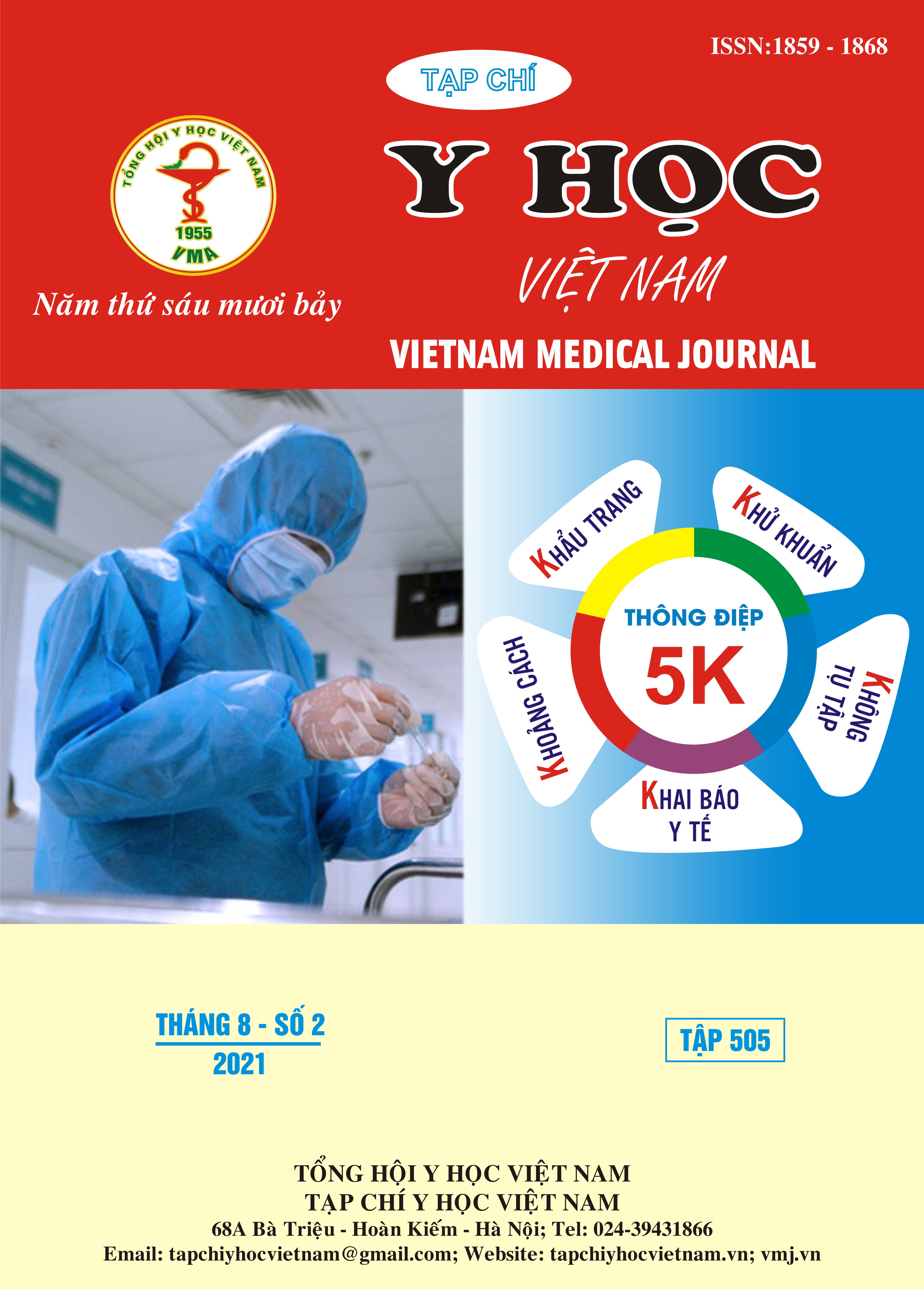THROMBOLYSIS FOR STROKE WITH UNKNOWN TIME OF ONSET WHO HAD MRI FINDINGS OF MISMATCH DWI – FLAIR
Main Article Content
Abstract
Objectives: To describe the clinical, imaging and results of reperfusion therapy with intravenous alteplase thrombolytics in patients with acute ischemic stroke with unknown time of onset based of mismatch between findings on MRI diffusion – weighted imaging and FLAIR. Methods: Retrospective descriptive case series, follow-up clinical outcomes up to 90 days after onset. Subjects were patients aged 18 years or older, acute ischemic stroke with unknown time of onset, treated with intravenous alteplase thrombolytics at Bach Mai Hospital, meeting the requirements of approximately time from last known well to thrombolysis more than 4.5 hours, and time from detection of stroke to thrombolysis less than 4.5 hours, with DWI – FLAIR mismatch on MRI, excluded patients in whom thrombectomy was planned. Results: From May 2019 to May 2021, there were 40 patients who met the study conditions. 72.5% are male, average age is 67.05 years old. The most frequent reson for an unknown time of onset of stroke symptoms was that the patient had awakened from nighttime sleep with stroke symptoms (75% ). The median interval between the time that the patient was last known to be well and treatment initiation was 7.75 hours. The median time between symptom recognition and administration of alteplase was 3.1 hours. The median NIHSS score at the time of the baseline examination was 6 points, the mean NIHSS score after 24 h thrombolysis was 3 points. The favorable outcome (a score of 0 or 1 on the modified Rankin scale) at 90 days in 23 of 40 patients (57.5%). In the safety population at 90 days, death or an inability to live independently (score on the modified Rankin scale, 4 to 6) occurred in 5 of 40 patients (12.5%). Death was reported in 1 patient (2.5%). Death was attributed to symptomatic intracranial hemorrhage. The rate of symptomatic intracranial hemorrhage was 5% (2 patients). Conclusions: Thrombolysis with intravenous alteplase in patients with acute ischemic stroke with unknown time of onset who presented with MRI findings of an ischemic lesion on diffusion – weighted imaging but no clearly visible singnal change in the corresponding region on FLAIR is positive.
Article Details
Keywords
Wake-up stroke, Stroke with Unknown Time of Symptom Onset, DWI-FLAIR mismatch
References
2. The top 10 causes of death. Accessed August 8, 2021. https://www.who.int/news-room/fact-sheets/ detail/ the-top-10-causes-of-death
3. Yamanashi H, Ngoc MQ, Huy TV, et al. Population-Based Incidence Rates of First-Ever Stroke in Central Vietnam. PLOS ONE. 2016; 11(8): e0160665. doi:10.1371/ journal.pone.0160665
4. Mackey J, Kleindorfer D, Sucharew H, et al. Population-based study of wake-up strokes. Neurology. 2011;76(19):1662-1667. doi:10.1212/ WNL.0b013e318219fb30
5. Rimmele D, Thomalla G. Wake-Up Stroke: Clinical Characteristics, Imaging Findings, and Treatment Option – an Update. Front Neurol. 2014;5:35. doi:10.3389/fneur.2014.00035
6. Thomalla G, Rossbach P, Rosenkranz M, et al. Negative fluid-attenuated inversion recovery imaging identifies acute ischemic stroke at 3 hours or less. Ann Neurol. 2009;65(6):724-732. doi:10.1002/ana.21651
7. Thomalla G, Cheng B, Ebinger M, et al. DWI-FLAIR mismatch for the identification of patients with acute ischaemic stroke within 4·5 h of symptom onset (PRE-FLAIR): a multicentre observational study. Lancet Neurol. 2011; 10(11):978-986. doi:10.1016/S1474-4422 (11)70192-2
8. Thomalla G, Simonsen CZ, Boutitie F, et al. MRI-Guided Thrombolysis for Stroke with Unknown Time of Onset. N Engl J Med. 2018;379(7):611-622. doi:10.1056/NEJMoa1804355


